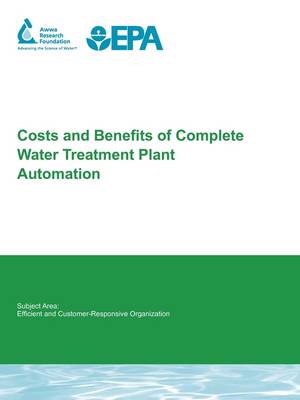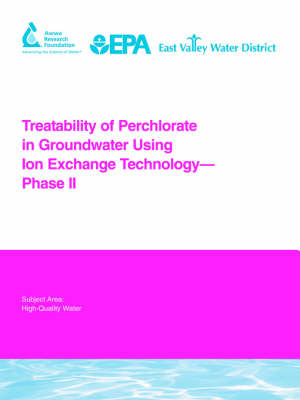Water Research Foundation Report
2 total works
Costs and Benefits of Complete Water Treatment Plant Automation
by D. Roberts, D. Kubel, A. Carrie, D. Schoeder, and C Sorenson
Published 16 December 2008
Water utilities are facing a number of trends that are having a broad impact on operations, maintenance, and capital expenditures including increasing labor, energy, and chemical costs. Advanced automation is viewed as a tool that can help to minimize the impacts of many of these. Complete automation of water treatment plants, where the facilities run unattended for some period of time, is used by many utilities as a cost savings strategy. However, many utilities have not implemented complete automation yet for a variety of reasons. An economic assessment methodology for automation projects would be useful to utility decision makers.
The objectives of the project were to (1) identify costs, benefits, and risks associated with complete water treatment plant (WTP) plant automation; (2) identify the levels of automation needed for unattended operation; (3) review regulatory requirements related to unattended operation; (4) develop an economic analysis method useful to utility decisions makers for evaluating the life-cycle cost/benefits of automation investments; and (5) develop automation case studies demonstrating the approach.
The study included questionnaires, a review of literature and applicable regulations, an evaluation of current economic analysis techniques, industry best practices, and case studies. A water utility focus group provided guidance during the project. The intent of this project was not to perform a statistically representative survey of the water industry regarding this topic, but to provide several utility automation experiences for consideration. To that end, six automation case studies were completed and are documented in the report. This report includes information on the current levels of automation available, other industry experience, and cost information; utility case studies and sample economic calculations to enhance understanding the issues and concepts; and tools that will allow a tailored analysis to the unique utility automation situations.
The authors believe that the report provides a unique and comprehensive source of information, methodologies, and examples for use by decision makers involved in the evaluation and planning of water treatment plant automation projects, specifically, automation projects that facilitate unattended operations. The report provides information not only on the technical aspects of automation but also from a business perspective.
The objectives of the project were to (1) identify costs, benefits, and risks associated with complete water treatment plant (WTP) plant automation; (2) identify the levels of automation needed for unattended operation; (3) review regulatory requirements related to unattended operation; (4) develop an economic analysis method useful to utility decisions makers for evaluating the life-cycle cost/benefits of automation investments; and (5) develop automation case studies demonstrating the approach.
The study included questionnaires, a review of literature and applicable regulations, an evaluation of current economic analysis techniques, industry best practices, and case studies. A water utility focus group provided guidance during the project. The intent of this project was not to perform a statistically representative survey of the water industry regarding this topic, but to provide several utility automation experiences for consideration. To that end, six automation case studies were completed and are documented in the report. This report includes information on the current levels of automation available, other industry experience, and cost information; utility case studies and sample economic calculations to enhance understanding the issues and concepts; and tools that will allow a tailored analysis to the unique utility automation situations.
The authors believe that the report provides a unique and comprehensive source of information, methodologies, and examples for use by decision makers involved in the evaluation and planning of water treatment plant automation projects, specifically, automation projects that facilitate unattended operations. The report provides information not only on the technical aspects of automation but also from a business perspective.
Treatability of Perchlorate in Groundwater Using Ion Exchange Technology - Phase II
by Lee Aldridge, Dennis A. Clifford, D. Roberts, Thomas Gillogly, Geno Lehman, and X. Lin
Published 30 April 2005
Since 1997, several perchlorate treatment technologies have proven to be technically feasible at drinking-water treatment scale: biological reduction, ion exchange, reverse osmosis (RO) membranes, and granular activated carbon (GAC). The objectives of this project were to demonstrate the long-term performance of conventional ion-exchange technology for perchlorate removal and evaluate three disparate alternatives (chemical, biological, electrolytic) for brine treatment and reuse. This project evaluated three fundamentally different brine treatment and reuse processes. The first process, the biological brine treatment system, operated as a sequencing batch reactor (SBR). The second process, the physical/chemical brine treatment system, employed a high-pressure and high-temperature catalytic process to reduce the nitrate and perchlorate in the spent brine. The last process, a simple bipolar electrochemical cell, electrolytically reduced the perchlorate and/or nitrate present in the spent ion exchange brine. Potential users of the treatment technologies developed in this research include all municipalities required to treat perchlorate- and/or nitrate-contaminated groundwater. The treatment processes evaluated in this research are applicable to both existing and future ion exchange systems, and could be applied to decontaminating high-pressure membrane reject streams as well.

